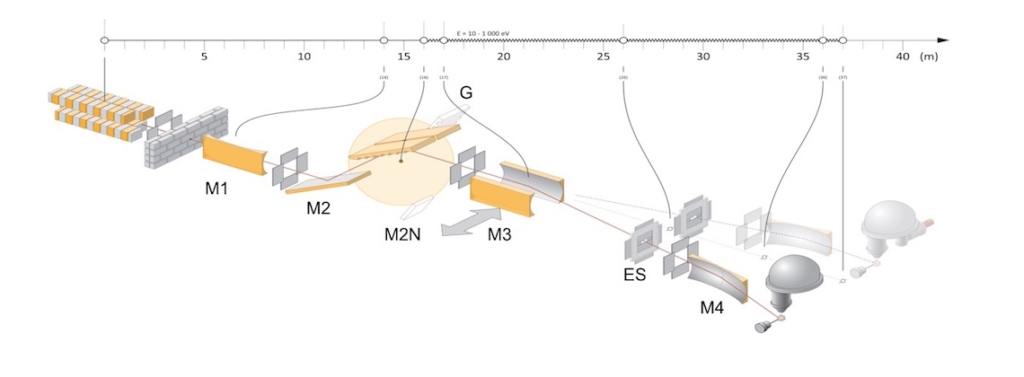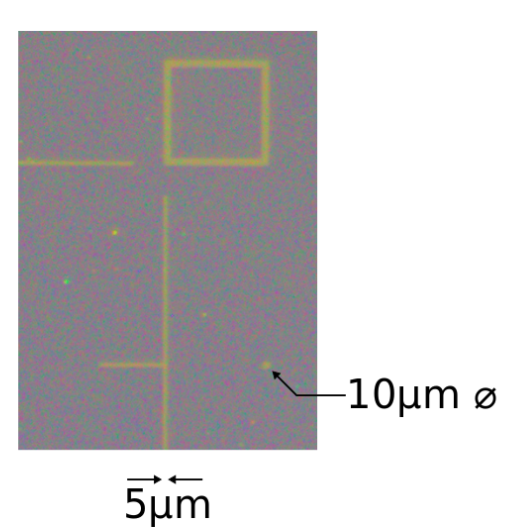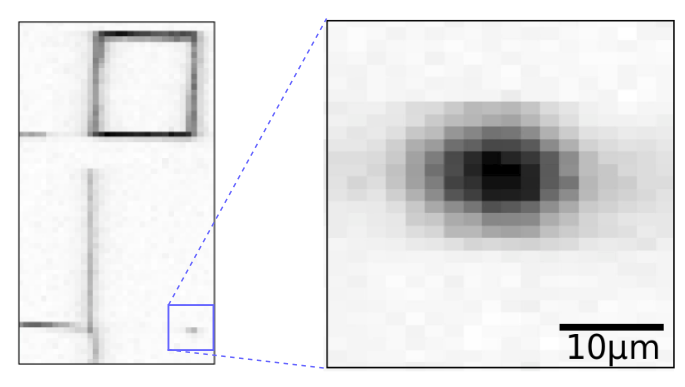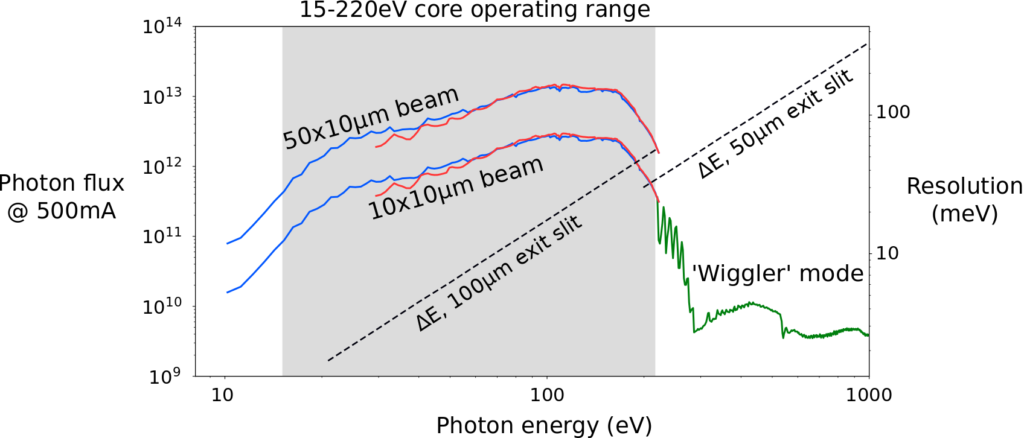
Overview
The beamline is sourced by a quasi-periodic elliptically polarizing undulator (qEPU). A toroidal mirror M1 collects the diverging beam from the undulator and collimates it vertically (in the dispersive plane of the grating G), in addition to focusing horizontally at the exit slit. The monochromator is a combined collimated cNIM and cPGM type. The monochromator energy-disperses the radiation, which is then focused vertically at the exit slit by a cylindrical mirror M3. The horizontal image of the source at the exit slit is refocused at the sample position by an ellipsoidal mirror M4 with a demagnification of 10:1.
The exit slit unit includes a combination of gas filters and solid-state thin-film filters for the suppression of higher-order light.
The monochromator and the exit slits are delivered by TOYAMA, Japan and the mirror chambers by FMB, Berlin.
| Photon energy range (optimal performance) | 15-220eV |
| Accessible photon energy range | 10-1000eV |
| Polarization | Linear vertical and horizontal. Circular commissioning ongoing, available on request. |
| Minimum photon spot size | Down to 8x10µm at normal incidence, 8x15μm at normal emission. |
| Photon flux | 10¹¹ - 10¹³ ph/s, depends on resolution/spotsize |
| Energy resolution | 1meV at 21eV, 2meV at 63eV (measured, 800L/mm, 20μm exit slit) |
Gratings
All user beamtimes so far have operated on a single grating (800 L/mm cPGM) over the entire energy range. The monochromator has 3 additional gratings which are now starting to leave the commissioning phase and are available on request: 92 L/mm (cPGM) for higher flux, 2400 L/mm (cPGM) for higher energy resolution, and 4000 L/mm (cNIM) for preserving polarization purity at low energies.
Optical microscope

XY map of Au4f core level

Spot size
The light spot on the sample is essentially the size of the exit slit aperture, demagnified by a factor close to 10. So for example, an exit slit setting of (100×200)µm will produce a spot size at normal incidence of (10×20)µm. This is independent of photon energy. For exit slit settings below (100×100)µm the spot size becomes limited by the optical properties of the M4 mirror, and does not decrease below the measured minimum of (8×10)µm.
Photon energies greater than 220 electronvolt
With significantly reduced flux (10¹⁰ ph/s) and energy resolution (>100meV), photon energies up to at least 1000eV are obtainable. These conditions are not suitable for soft-x-ray ARPES measurements but are useful for obtaining complementary core level spectra.
Flux
The beamline flux is strongly dependent on the selected energy resolution, spot size and photon energy. The plot below gives example flux curves for a subset of beamline settings. For typical ARPES experiments in realistic conditions, the flux is sufficiently high that it often must be arbitrarily throttled to prevent damage to the MCP in the electron analyzer.
